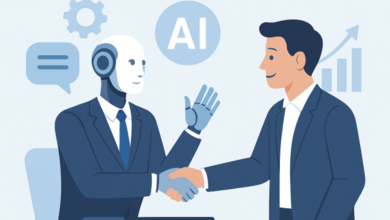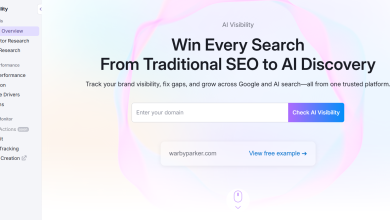
Your IT team is in quicksand. And, like with quicksand, the more they struggle and flail, the deeper down they’ll be pulled. It’s not pretty. But I chose this metaphor for a reason: panic won’t help. It’s counterintuitive, but the lifeline they need is the exact thing that IT teams — and many leaders in the IT and security space — have been slower to adopt. That lifeline is, of course, AI.
If you’re thinking, I could have guessed that, you’re reading the right article. I don’t expect this to be breaking news, but I do expect that I can break this down in a way that will combat lingering resistance and make the rescue mission, so to speak, more efficient. Because you don’t just want your IT team to stop sinking. You don’t just want them to get out of the quicksand. You want them to stand on firmer ground than everyone else.
This is how. And it starts with some good news. Data indicates that some teams are already being pulled to proverbial safety: 42% of IT leaders use AI for predictive maintenance, 41% automate routine self-service tasks with it and 36% rely on it for threat detection, according to new research. These aren’t experiments — this is “rescue” work happening in production environments right now.
What quicksand looks like in IT
I know we can all envision a talented engineer spending three hours manually correlating log files to track down why email is slow for the accounting department. We can imagine a security analyst going through 200 alerts to find the two that actually matter. We can picture a help desk lead explaining the same password reset process for the fifteenth time this week.
This is the quicksand. It’s not dramatic — it’s mundane. And it’s suffocating your team’s ability to do meaningful work.
Brilliant engineers burn out constantly because they spend the bulk of their time on work that could be automated. The pattern is always the same: talent gets buried under routine tasks, creativity dies and good people leave for different roles (or careers) where they can solve interesting problems.
AI breaks this pattern by handling the predictable work that doesn’t need human judgment. Log analysis. Pattern recognition. Initial threat assessment. Alert fatigue and repetitive tasks hinder smart people from doing smart work.
The rescue comes from seeing what’s coming next
Here’s where AI becomes genuinely useful instead of just theoretically interesting: it stops problems before they become emergencies. To take serious creative liberties with our quicksand metaphor, traditional IT management is like being a lifeguard who only jumps in after someone’s already drowning. AI is like having a spotter who sees the person struggling before they go under.
Threat detection gets precise. AI analyses traffic patterns and identifies real-time problems. Your people investigate actual threats instead of chasing false alarms.
Patch management gets smarter. AI ranks vulnerabilities by actual risk — asset importance, active threats, business impact. You fix what matters first, rather than tackling everything at once.
Maintenance turns predictive. Fix problems before they break instead of scrambling after incidents.
The sneaky obstacle dragging down your team
Before you throw AI at the quicksand, you need to fully understand what’s making the trap so insidious. Reports from nearly one-third of organisations suggest that data silos limit the ability to use AI effectively. (And those are only the ones who have awareness of the problem and willingness to admit it!)
This creates a Catch-22 situation. You need AI to solve the data problem, but the data problem stops you from deploying AI.
Your vulnerability scanner catches something that your endpoint tools miss. Information sits trapped in different systems. Visibility gaps everywhere.
Technical complexity doesn’t help either. Teams worry about breaking critical operations. False positives, compatibility headaches, training overhead — all valid concerns when uptime matters.
Budget conversations get tricky, too. Executives want proof that AI investments pay off. Measuring what AI prevents is harder than counting what it fixes.
Why security makes this urgent
Cybersecurity adds weight to the quicksand. Recent research shows 46% of security professionals say IT teams lack urgency when it comes to cybersecurity issues, and 40% say IT teams don’t understand their organisation’s risk tolerance. Ransomware leads the threat predictions for 2025.
Security professionals know the drill. Threats move faster than defences. Attackers use AI to scale their operations, whilst defenders often are stuck manually processing alerts.
Meanwhile, teams are protecting more networks and devices with the same headcount. Every alert needs investigation. Every patch needs prioritisation. Every incident needs a response. The workload doesn’t match the resources.
But AI doesn’t replace your security team — it becomes a force multiplier. Not only can it help with threat detection and incident correlation, but it can reduce the manual functions and grunt work that burn out many security professionals.
Getting to solid ground
Now, how do you actually pull your team out of the quicksand? I know that “Use AI” isn’t a very helpful or complete answer. So, here’s what works based on real deployment data:
Fix your data silos first. AI needs clean, accessible information to work properly. Consolidate security data into formats that AI can actually use.
Start small. Pick one specific problem — log analysis, vulnerability scanning, basic automation. Build confidence before tackling complex workflows.
Train your team. People need to understand how AI tools work, when to trust outputs and how to interpret results. Knowledge gaps kill effectiveness.
Routine automation pays off fast. Password resets, access requests and basic troubleshooting run themselves. Your team focuses on strategy instead of repetitive support tickets.
Measure what matters. Track alert reductions, response times and patch success rates. Prove AI’s impact with hard numbers.
Scale and evolve. Security threats evolve constantly. AI helps you evolve with them. Your organisational needs will evolve, too. Scale and adapt to track compliance across all new devices, monitor new and shifting user behaviour, ensure AI is set up to catch configuration drift — make AI work for you, not against you.
Now that you’re out, it’s time to stand on firmer ground than your competition
As I said, getting out of the quicksand is only a bare minimum goal here. You want to be able to stand on firmer ground than the competition.
The real value comes from prediction, not reaction. AI spots patterns in historical data and flags future risks. You strengthen defences where attacks will happen instead of cleaning up afterwards.
Threat hunting gets proactive. AI identifies attack patterns and predicts threats before they materialise. Intelligence drives defence strategy.
Risk assessment runs continuously instead of annually. AI evaluates your security posture and suggests improvements as conditions change. You adapt in real time.
Manual processes can’t replicate that kind of speed and efficiency, no matter how talented the teams are. And talented people are increasingly looking to work for companies where they feel they can make a real impact and drive the organisation forward, versus falling into a pit of tedious overwhelm.
Without leveraging AI, teams will continue sinking as they are tasked with managing increasingly complex hybrid environments without a corresponding increase in resources. If you, like most leaders this year, are feeling a bit antsy about your budget, it’s imperative that you take a hard look at where you’re investing. Investing in AI doesn’t mean divesting from your people. It means investing in them — in their productivity, in their ability to be strategic and innovative, in their retention rates and in their well-being.





